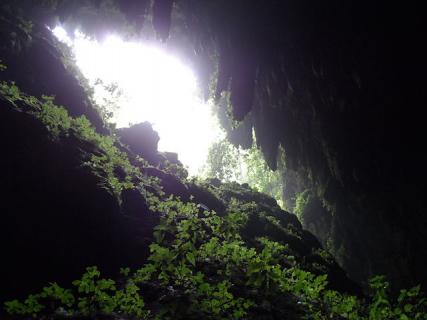Cavernas de camuy: Río Camuy Cave Park | Discover Puerto Rico
Exploring Las Cavernas del Río Camuy
Puerto Rico is home to one of the largest underground river-cave systems in the world, and the easiest way to explore the island’s subterranean world is at Las Cavernas del Río Camuy (Carr. 129, km 18.9, 787/898-3100 or 787/898-3136, Wed.-Sun. 8:30am-5pm, $15 adults, $10 children under 12, free for senior citizens over 75, parking $3). The park is a well-maintained, tightly run ship, and it’s a good thing. This place draws major crowds, including busloads of schoolchildren. Buy a ticket, browse the gift shop, and watch a 10-minute film (English and Spanish) while waiting for the trolley, which runs every 30 minutes.
Mouth of Las Cavernas del Rio Camuy. Photo © Suzanne Van Atten.
Once aboard, you zip down, down, down toward the mouth of Cueva Clara. Along the way you pass a mind-boggling display of virgin tropical forest: African tulips, mamey apples, passion fruit, red ginger, bananas, begonias, ferns, and the tiniest, most delicate orchids you’ve ever seen are everywhere. Before you know it, you’re standing at the entrance to Clara.
Before you know it, you’re standing at the entrance to Clara.
The cavern’s natural opening has been preserved. Visitors enter to the right of it through a larger, artificially constructed opening. The path steeply descends, bottoming out just below the natural opening, through which the sun shines brilliantly, creating the sort of mystical scene that could inspire visions of hobbits and fairies. But farther down are even more magnificent sights as the cavern opens into a 170-foot room thick with stalactites and stalagmites, most notably the Giant Stalagmite, measuring 17 feet tall and 30 feet in diameter. There’s also a subterranean waterfall created by the Río Camuy, which runs through parts of the cave. In addition to bats, crickets, and spiders, the cave is home to a creature that is so rare that this is the only place it lives. It’s a microscopic crustacean called Alloweckelia gurneii, and it can’t be seen by the naked eye.
Other natural sights in the park include Tres Pueblos sinkhole, seen from a viewing platform; Cathedral Cave; and Spiral Cave, accessible by a 200-step staircase to its mouth.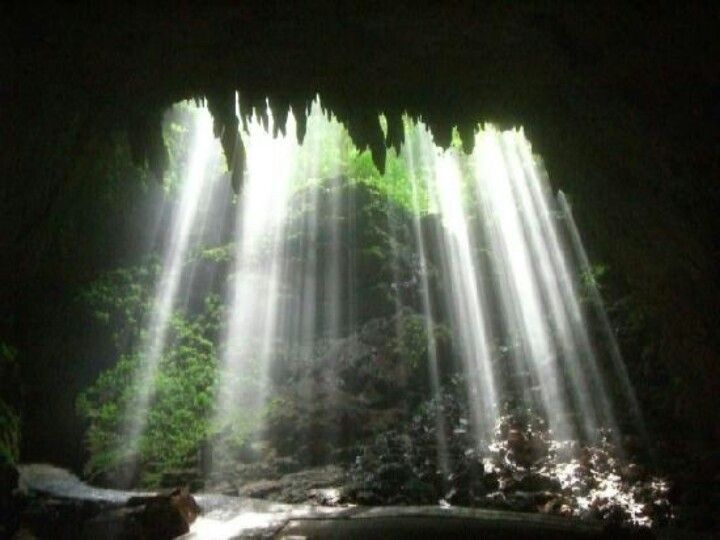 There is also an interactive miniature gold mine where kids can pan for “nuggets,” along with a snack bar, a gift shop, and trails. And although it’s not publicized, there are a limited number of wooded campsites.
There is also an interactive miniature gold mine where kids can pan for “nuggets,” along with a snack bar, a gift shop, and trails. And although it’s not publicized, there are a limited number of wooded campsites.
Of course, the part of the caves the general public sees is a tiny fraction of the wonders to be found. Luckily for experienced spelunkers, they can arrange tours to explore more remote parts of the caves. Sturdy, nonslip shoes are required; the cave paths get very slippery.
A couple of important notes: The park often closes during rainy weather, so keep an eye on the forecast. The park also closes if it achieves maximum capacity, so go early, especially on holiday weekends. The parking lot closes at 2:45pm and the last tour is at 3:30pm.
Parque de las Cavernas Rio Camuy in Puerto Rico – One of the Word’s Largest Cave Networks – Uncover Travel
Uncover Travel
Best day trips from Old San Juan in Puerto Rico, Largest cave networks in the world, Places to visit in Puerto Rico
The Rio Camuy Cave Park in Puerto Rico is one of the world’s largest networks of caves and home to the third largest underground river on the planet. The network contains more than 16 kilometres (10 miles) of caverns, 220 caves and 17 entrances to the cave system that have been mapped since their discovery in 1958. It is believed that there are at least another 800 undiscovered Camuy caves.
The network contains more than 16 kilometres (10 miles) of caverns, 220 caves and 17 entrances to the cave system that have been mapped since their discovery in 1958. It is believed that there are at least another 800 undiscovered Camuy caves.
The main entrance to the park is located in Arecibo on the north coast of Puerto Rico, about an hour and a half by car from Old San Juan. Visitors take a trolley from the visitor centre down the winding path to the entrance of the subterranean chamber of Cueva Clara. Once inside the cave, a guide leads visitors down a pathway into the darkness, which is pierced with shafts of sunlight, lined with ferns and echoing with bat screeches.
Within the cave is Puerto Rico’s largest stalagmite, which stands at 5 metres (17 feet) high and has a diameter of 9 metres (30 feet). Stalagmites and stalactites are types of speleothems – deposits of minerals that form into cave structures and line the inside of caves. Stalactites are the formations that hang down, while stalagmites look like they are emerging from the ground. Some have formed over thousands of years, while others grow quite rapidly.
Some have formed over thousands of years, while others grow quite rapidly.
Throughout the caves a vast range of interesting rock formations can be seen. Within the main cave a natural rock formation resembling an Taíno Indian’s face looks down on visitors, reminding them of the tribes that once used these caves. Other natural formations in the cave park include The Witch and The Broccoli and hundreds of other intriguing shapes line the caverns and tunnels.
The path leads to Sumidero de Empalme (Empalme Sinkhole), where visitors find themselves emerging into sunlight that shines through the sinkhole 137 metres (450 feet) above. On the north face the entrance to the dead-end High Cave, 24 metres (80 feet) high and 64 meters (210) deep, can be seen.
The sound of the Puerto Rican coquí frogs fills the sinkhole. These tiny tree frogs are around 2.5 centimetres (1 inch) long and are known for the high pitched ‘co-qui’ sound they make from dusk until dawn.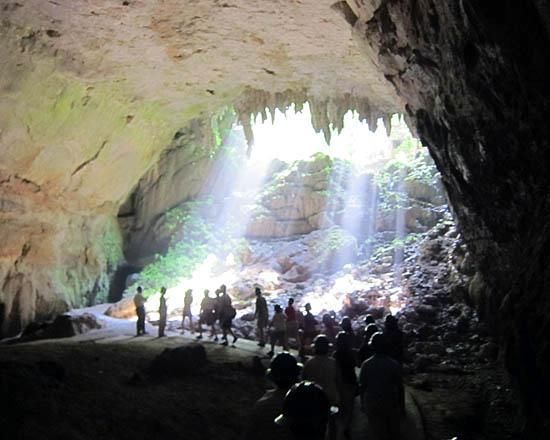 Puerto Ricans love their coquí frogs and have written songs and poems about them. Coquí frogs do not hatch from eggs as tadpoles; they begin life as small frogs and the extremely rare (and possibly extinct) coquí dorado is the only known frog specie in the world to bear live young.
Puerto Ricans love their coquí frogs and have written songs and poems about them. Coquí frogs do not hatch from eggs as tadpoles; they begin life as small frogs and the extremely rare (and possibly extinct) coquí dorado is the only known frog specie in the world to bear live young.
Guides lead visitors down the winding path called ‘The Labyrinth’. In the darkness, one can hear the mighty Camuy River flowing 45 metres (150 feet) below. Deeper into the caves the echoes of bats become louder. It was here that the bat sounds for the movie Batman Forever were recorded.
The 300 acre park is managed by Puerto Rico National Parks. Tickets can be purchased at the entrance and are numbered. The trolley arrives approximately every 15 minutes and takes 30 to 60 people in each trip. Visitors will board the trolley by the number on their tickets, so listen out for your number being called (not necessarily in order).
Tickets cost 30$ for adults, 13$ for children aged 4 to 12 and children under 12 are free. Parking rates apply. The park is open from 8:00 to 17:00 from Wednesday to Sunday and the last tour leaves at approximately 15:30 with last tickets being sold at around 15:00. Park may be closed in case of inclement weather.
Parking rates apply. The park is open from 8:00 to 17:00 from Wednesday to Sunday and the last tour leaves at approximately 15:30 with last tickets being sold at around 15:00. Park may be closed in case of inclement weather.
N.B. Prices, etc. as provided by the official website at time of posting.
SOURCES:
- https://www.uncommoncaribbean.com/2010/07/27/uncommon-attraction-puerto-ricos-amazing-rio-camuy-caves/
- https://www.viator.com/San-Juan-attractions/Rio-Camuy-Cave-Park/d903-a2462
- http://islandsofpuertorico.com/parques-de-las-cavernas-del-rio-camuy/
- http://www2.pr.gov/Agencias/cdpn/pages/Channel.aspx?RequestID=4
- http://www.nytimes.com/1988/01/03/travel/exploring-puerto-rico-from-the-ground-down.html?pagewanted=all
- http://science.howstuffworks.com/environmental/earth/geology/stalactite-stalagmite.htm
- http://www.elboricua.com/coqui.html
- https://sobremuchascosas.wordpress.
 com/2005/10/01/coqui-dorado/
com/2005/10/01/coqui-dorado/ - http://puertoricodeaventura.com/index.php/en/eco-nightlife/item/62-eco-nights-park-of-the-camuy-river-caves-a-totally-different-experience
- http://puertoricodeaventura.com/index.php/en/eco-nightlife/item/62-eco-nights-park-of-the-camuy-river-caves-a-totally-different-experience
- http://puertoricorevealed.com/caves-in-puerto-rico/
90,000 what to choose for a holiday. Excursions from the Dominican Republic to Haiti, Jamaica and Puerto Rico Excursion from the Dominican Republic to Haiti
Despite the fact that the Dominican Republic offers a large number of attractions, some tourists do not want to limit themselves to exploring this country. There are other interesting countries near the Dominican Republic, such as Haiti (shares the island of Hispaniola with the Dominican Republic), Jamaica and Puerto Rico.
Excursion from the Dominican Republic to Haiti
Haiti is not a popular tourist country, although it has many beaches in the Caribbean and offers a lot of exciting places. However, this country will be of interest mainly to travelers who want to experience the rich culture of Haiti and see with their own eyes the diverse coastal and mountain landscapes of this amazing country. Russian tourists know practically nothing about Haiti, there are no good guides to this country in Russian. But all this makes Haiti an even more attractive destination for curious and adventurous tourists. Since Haiti is on the same island as the Dominican Republic, you can reach this country by land.
However, this country will be of interest mainly to travelers who want to experience the rich culture of Haiti and see with their own eyes the diverse coastal and mountain landscapes of this amazing country. Russian tourists know practically nothing about Haiti, there are no good guides to this country in Russian. But all this makes Haiti an even more attractive destination for curious and adventurous tourists. Since Haiti is on the same island as the Dominican Republic, you can reach this country by land.
Excursion from the Dominican Republic to Jamaica
Not so long ago (in 2013) the Biblio Globus tour operator offered tours to Jamaica with a direct flight from Moscow. Now, unfortunately, there are no such tours, but many tourists still dream of visiting this amazing country. The easiest way to do this is during a holiday in the Dominican Republic, since Jamaica is not far from this country.
The famous birthplace of Bob Marley and reggae has good beach resorts in the Caribbean. Here you will find many interesting historical and natural attractions, as well as many diving sites.
Here you will find many interesting historical and natural attractions, as well as many diving sites.
How to organize an excursion to Jamaica from the Dominican Republic? You need to buy an air ticket to one of Jamaica’s airports (mostly independent tourists fly to Kingston Airport), book a hotel, and buy excursions in one of the travel agencies on the spot. The flight to Jamaica will include transfers, but connections are usually quite convenient. So the total flight time will be short. True, this only applies to flights from Santo Domingo Airport.
Excursions from the Dominican Republic to Puerto Rico
Puerto Rico has a mix of Spanish, Indian and African influences. This island has rainforests, sandy beaches and an ever growing number of hotels. What gives you an excursion to Puerto Rico from the Dominican Republic? You can hike in the El Yunque Forest, visit the Arte de Puerto Rico Museum with the best collection of art in the Caribbean, walk through the Old City of San Juan, explore the caves in the Parc de las Cavernas del National Park -Rio Camui, enjoy surfing at Playa Flamenco.
Puerto Rico has a fairly mild climate all year round. The weather here is about the same as in the Dominican Republic. Therefore, you can go on an excursion to Puerto Rico at any time of the year.
It is worth noting that organizing an excursion from Punta Cana to Puerto Rico is much easier than to Haiti or Jamaica. The fact is that there is a direct regular service between Punta Cana and the city of San Juan in Puerto Rico. JetBlue Airlines offers several flights a week between the popular Dominican resort and the main city of Puerto Rico. So all you have to do is drive from your hotel to Punta Cana airport, get on a plane and fly to Puerto Rico. The flight duration is only 57 minutes and the round trip ticket price is from 319$. The main thing to keep in mind is that Russian tourists need an American visa to visit Puerto Rico.
Caribbean – what to choose? Overview of the resorts of Cuba, Dominican Republic, Jamaica
The Caribbean seduces, enchants and bewitches.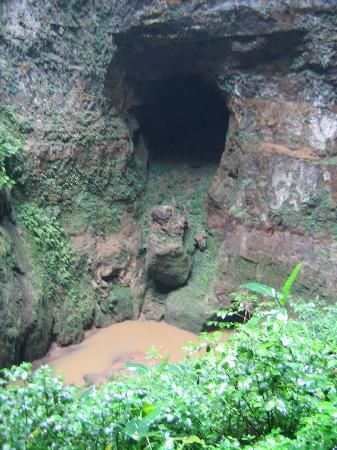 The azure sea, endless beaches with white sand, tropical nature, and also special Caribbean hospitality, fun and cordiality.
The azure sea, endless beaches with white sand, tropical nature, and also special Caribbean hospitality, fun and cordiality.
Christopher Columbus discovered this fabulous land for Europeans in 1492, colonizers of all stripes and empires sought to grab their “piece of paradise” here, pirates and filibusters plied the sea, and now the Caribbean is one of the most popular beach exotic destinations.
Several dozen Caribbean islands, located between North and South America, are the territory of more than 30 states, the most prominent representatives of which are Cuba, Dominican Republic and Jamaica.
Due to the tropical climate, you can relax here all year round, the region is universal for everyone: families with children, young people, groups of friends, and romantic couples. There are hotels for every taste, and all-inclusive hotels are especially popular.
The All Inclusive formula is solid and extensive: meals in all hotel restaurants throughout the day, local soft and alcoholic drinks, daytime entertainment and sports animation, evening shows, mini-clubs for children and teenagers, a fitness center and gym, non-motorized water sports on the beach, sunbeds and umbrellas by the pool and on the beach – great opportunities for relaxation and entertainment.
The Caribbean is popular not only because of the excellent climate and excellent living conditions. In addition to a comfortable beach holiday and enjoying the beauties of nature, there are many attractions for travelers, sugar cane plantations and rum factories, diving, snorkeling, boat trips – everything to make the holidays bright and eventful.
Dominican Republic
Visa
. Not required. At the entrance, a tourist card is issued, a fee of $ 10 is charged. The card must be kept for control at the return flight.
Time
. Time zone: UTC-04:00. Time difference compared to Moscow: minus 7 hours. The clock does not change between winter and summer time.
Climate
. From November to April “dry season”, the average air temperature is +25, water +22. From May to October is the “wet season”, with frequent rains lasting an average of 2 hours. During the day, on average +27, water +25, in August and September the air warms up to +33, water up to +27.
Punta Cana / Bavaro
- Distance from the airport 15-30 km.
- The most famous and largest resort in the country, offering a wide range of hotels.
- The best beaches in the Dominican Republic. Spacious white sand beaches, few waves, emerald clear water.
- For lovers of outdoor activities and parties. Animation in hotels, disco, shows, casinos.
La Romana
- 150 km from Santo Domingo and from Punta Cana.
- Picturesque beaches, yacht club. 30 km east of La Romana is one of the most beautiful beaches in the country, Bayahibe. Nearby is the settlement of artists Altos de Chavon, where an amphitheater for 5 thousand people was built.
- Good beaches, coconut palms, white sand, almost no waves, clear water.
- Excursions, water sports. Excellent conditions for playing golf. Excellent diving. In the Bayahibe area, divers are attracted by a large artificially sunken ship.

Samana
- 20-30 km from Samana airport.
- An amazing and mysterious corner of nature with the most beautiful natural beaches.
- Excellent beaches, white sand, no waves, you can see flamingos, turtles, iguanas on the beach.
- For lovers of a quiet secluded holiday in the bosom of virgin nature. An ideal place for diving. Excursions, Water sports. Excellent fishing.
Juan Dolio, Boca Chica
- 80 km from Santo Domingo.
- Located in the southeast of the island, most tourist class hotels are located on the Caribbean coast.
- Grey-yellow sand, less clear water than on the Atlantic coast. Many hotels have a city beach.
- A very budget and fun vacation. For lovers of outdoor activities, parties, nightlife. Discos, night casinos, golf.
Puerto Plata
- 250 km from Santo Domingo or 20 km from Puerto Plata Airport.
- North coast resort.
 It is believed that it was in this place that Christopher Columbus first landed on the island.
It is believed that it was in this place that Christopher Columbus first landed on the island. - Excellent beaches, some with golden and white sand, many protected by coral reefs, so there are no waves. Cabarete Beach is considered the best place for windsurfing and kitesurfing.
- For lovers of water sports, divers. Wide opportunities for excursions. A major port that accepts cruise ships.
| Find your tour to the Dominican Republic |
Cuba
Visa
. Not required.
At passport control, a migration card is presented (as a rule, it is issued on the plane, where it can be filled in advance; the card can also be taken in the passport control area). This document must be kept before leaving the country.
Time
. Time zone: UTC-05:00 in winter, UTC-04:00 in summer. Time difference compared to Moscow: minus 8 hours in winter, minus 7 hours in summer.
Climate
. From October to May is the “dry season”, during the day on average +25, water +24. From June to September the “wet season” rains every 2-3 days, mostly in the afternoon. During the day, on average +28, in July for +30, water +28.
Varadero
- Distance from the airport 120 km.
- The most famous and popular resort. The best hotels, almost all on the first line of the sandy beach, all-inclusive meals.
- Snow-white sand, almost no waves, clear emerald water.
- Discos, restaurants, Tropicana show. Excursions: to Havana, sea safari, sea caves. Dolphinarium, yacht club, sea fishing, diving.
Cayo Coco / Cayo Guillermo
- From Cayo Coco airport to hotels – 15-20 km.
- Small picturesque islands of the archipelago Jardines del Rey (“Gardens of the King”) off the northern coast.
- Gorgeous beaches, white sand, almost no waves, clear water, on the beach you can see flamingos, turtles, iguanas, etc.

- For lovers of water sports, divers, secluded recreation in the bosom of nature.
Cayo Largo
- Domestic flight required. From Cayo Largo airport to hotels – 15-20 km.
- Reserve island off the southwest coast, 25 km long and only 3 km wide.
- White sand, calm Caribbean Sea, clear water.
- The proximity of the coral reef provides ample opportunities for diving. Excellent sea fishing.
Holguin
- From the airport Olgina to hotels on the beaches 30-70 km.
- The capital of the province of the same name, which has more than 40 beaches, the most famous of them – Guardalavaca, Playa Esmeralda, Playa Pesquero.
- Picturesque beaches with clean sand.
- For family, romantic and active holidays. Excursions, water sports.
| Find your tour to Cuba |
Jamaica
Visa
. Not required. At the entrance, a tourist card is issued (issued on the plane or in the arrivals hall), the document must be kept until the return flight
Not required. At the entrance, a tourist card is issued (issued on the plane or in the arrivals hall), the document must be kept until the return flight
for delivery at the border.
Time
. Time zone: UTC-05:00. Time difference compared to Moscow: minus 8 hours. The clock does not change between winter and summer time.
Climate
. From November to April “dry season”, the average temperature of air and water is +25. From May to October, the greatest amount of precipitation falls, the temperature is higher, during the day on average +28, water +26.
Montego Bay
- Distance from the airport 10-25 km.
- The second largest city on the island, which has an international airport. Large selection of hotels.
- Good beaches, few waves, the most famous beach is Doctor’s Cave.
- Excursions, diving, water sports.
Negril
- 80 km from Montego Bay.
- Located on the western tip of the island, the city is famous for its beaches and variety of hotels.

- 10 kilometers of white sand beaches.
- Animation in hotels, discos, night clubs, excursions, diving.
Ocho Rios
- 108 km from Montego Bay.
- Located in the center of the northern tip of the island. There are a large number of villas and hotels, two piers. Famous for its Duns River waterfall, tropical gardens, active plantations.
- The beaches are not very wide, the sand is greyish.
- Water sports, equestrian sports, animation in hotels, excursions.
Whitehouse
- 65 km from Montego Bay.
- Environmentally friendly resort on the southwest coast. There is only one hotel here, which has won the fame of “the pearl in the south of Jamaica.”
- The beach is said to be the longest white sandy beach on the south coast.
- Secluded relaxation in an atmosphere of complete tranquility.
| Find your Jamaica tour |
M
Many tourists, when planning a vacation, cannot decide where to go, it is more suitable for spending a vacation.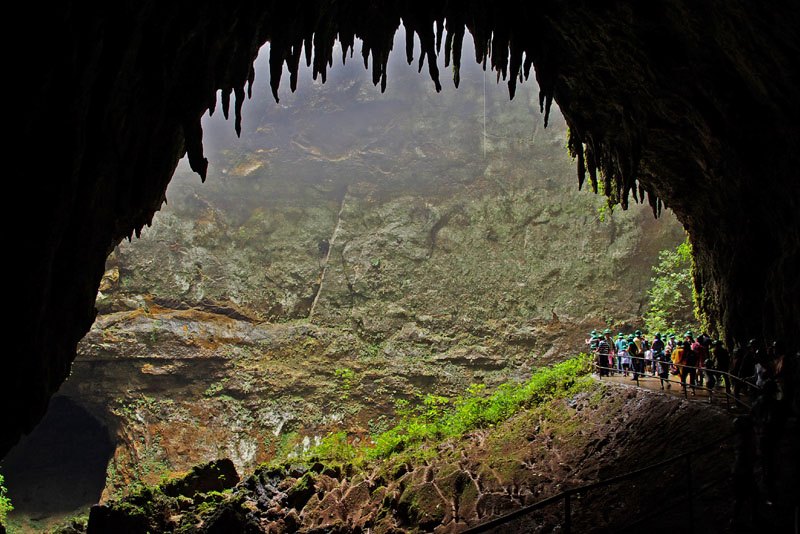 The choice, first of all, depends on what you expect from the upcoming trip, what beaches, hotels, entertainment you prefer, whether you want to attend excursions and much more.
The choice, first of all, depends on what you expect from the upcoming trip, what beaches, hotels, entertainment you prefer, whether you want to attend excursions and much more.
Trip to Jamaica
Every year more and more tourists come to Jamaica, but at the moment the development of tourism has not yet reached the same level as in the Dominican Republic.
Vacationers are attracted by the island with exotic nature, beautiful beaches and hotels from budget to the most luxurious. Mostly wealthy young couples or groups of friends come here. Families with children often forego Jamaica because of the long flight.
In addition to the capital Kingston, tourists prefer to relax in the following resorts: Ocho Rios, Montego Bay, Mandeville, Port Antonio, White House Bay, Runaway Bay.
Holidays in the Dominican Republic
The Dominican Republic is famous in the tourist world for its luxurious beach holidays, clean sea and excellent service. The coast, dotted with white soft sand and coconut palms, attracts lovers of beautiful exotic landscapes. The country boasts not only picturesque views on land, but also a magnificent underwater world.
The coast, dotted with white soft sand and coconut palms, attracts lovers of beautiful exotic landscapes. The country boasts not only picturesque views on land, but also a magnificent underwater world.
Snow-white beaches of the Dominican Republic
In the Dominican Republic, you can also visit numerous nature excursions, go to various historical and cultural attractions. However, the main goal of tourists who come here is to soak up the beach and relax in a first-class hotel with a high level of service.
Which is better to go: Dominican Republic or Jamaica
Jamaica or Dominican Republic – what to choose, because both of these countries are located in the Caribbean and are similar in nature. Both of these travel destinations have their advantages and disadvantages. Let’s look at the rest in each of the countries in more detail to make it easier for us to choose.
- Flight.
There are direct flights from Moscow to Punta Cana, the flight time is about 13 hours. From the cities of the Russian Federation, Belarus and Kazakhstan, the flight is carried out with a transfer in European cities, the travel time is 13-20 hours, excluding connections. Direct flights – only from Russia.
From the cities of the Russian Federation, Belarus and Kazakhstan, the flight is carried out with a transfer in European cities, the travel time is 13-20 hours, excluding connections. Direct flights – only from Russia.
A colorful carnival takes place in Jamaica in the spring.
There are several ways to get to Jamaica, but in any of them you cannot avoid a transfer. Travel time – from 16 hours without docking.
- Visa.
Citizens of the Russian Federation do not need a visa for both countries if the purpose of the visit is tourism and the period of stay does not exceed 30 days.
- Car rental.
A tourist over 25 years old who has an international driver’s license and a credit card can rent a car in the Dominican Republic. The cost of this service is quite high, so many prefer to use a taxi or public transport. Dominicans are extremely careless on the roads.
Dominican Beach
To rent a car in Jamaica, you must be at least 23 years of age, have an international driver’s license and a credit card. Locals drive cars too extreme, so you need to be very careful.
Locals drive cars too extreme, so you need to be very careful.
- Security.
In the Dominican Republic, you should not drink tap water or use it while brushing your teeth or washing your face. Fruits must be peeled, and vegetables thoroughly washed with boiled or specially purified water. You can use a credit card or exchange currency only in banks, hotels. In the dark, it is better not to visit the “cereal” areas.
Jamaican mesmerizing beach
Jamaica has an ambiguous security situation, however, in large tourist areas, you can not worry. In areas where locals live, it is better not to show up.
From 9 am to 3 pm, be sure to use sunscreen, and always keep repellent on hand, as mosquitoes and some other insects pose some danger. The country has a high level of venereal diseases and AIDS.
- Climate.
In the Dominican Republic, the weather is hot all year round, only slightly different in the winter and summer months. In summer, the thermometer rises to 33 °С, and in winter the weather is more comfortable, the air temperature is + 28-29 °С. Showers are possible from May to September, but they usually last no more than 20 minutes. During the summer months, sea breezes and intermittent rains soften the heat.
In summer, the thermometer rises to 33 °С, and in winter the weather is more comfortable, the air temperature is + 28-29 °С. Showers are possible from May to September, but they usually last no more than 20 minutes. During the summer months, sea breezes and intermittent rains soften the heat.
In Jamaica, the air temperature is approximately the same all year round, the average air temperature is + 25-28 °C. Hurricanes are possible from June to November, as in other Caribbean countries.
- Hotels.
In the Dominican Republic, hotels are much larger than those in Jamaica, and are located on clean sandy beaches. In Jamaica, there are hotels located on rocky shores. In terms of class and level of service, Dominican hotels are superior to their counterparts.
One of the many hotels in Jamaica “Sandals Negril Beach Resort & Spa”.
Many hotels in both countries operate on an all-inclusive basis, but in Jamaica it is distinguished by its slowness and regularity.
- Outside the hotel.
Holidays in the DR are mainly limited to the territory of hotels, most of which have a well-developed infrastructure. Tourists can go surfing, diving, snorkeling, play golf or tennis, go on a jeep safari, visit natural attractions and some historical sites, which are not so many here.
Jamaica is poorer in terms of excursions, but it can also offer visits to some amazing sights, mostly natural.
All these important details will help you decide whether Jamaica or the Dominican Republic is the right place for you.
Puerto Rico ✈️ Tour Log Book
The state was named “Charm Island”. For many years it has held a special place in the hearts of travelers from all over the world. They are conquered by colonial architecture, tropical climate, diverse landscapes and traditional cuisine. In the capital, you can walk along the cobbled streets and find colorful houses perched high on the hillsides. At this time, the locals dance down the street during the weekend parade.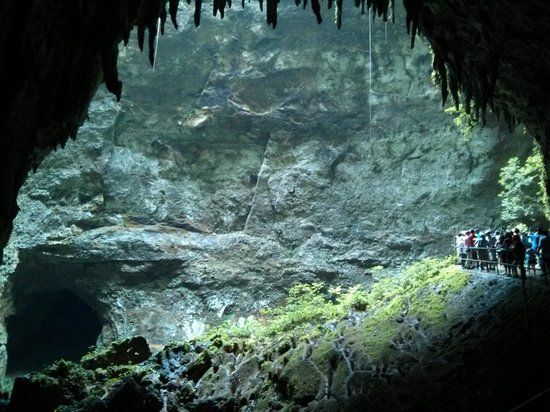 Despite recent economic hardships, Puerto Rico continues to amaze the imagination of all who visit.
Despite recent economic hardships, Puerto Rico continues to amaze the imagination of all who visit.
Territory and climate
This is the easternmost and smallest of the Greater Antilles. It borders the Atlantic Ocean to the north and the Caribbean to the south. Puerto Rico is an important access point in the hemisphere. Puerto Rico retains its strategic importance. The US Army Southern Command and other military installations are located here. The country includes the surrounding small islands. Including Culebra and Vieques to the east and Mona to the west. Mona is a wildlife sanctuary under state jurisdiction. The total land area, including smaller islands, is 8,875 square kilometers. The tropical island ecosystem is unique and diverse. Despite industrialization and urban sprawl.
In addition to Mona, the government has created several other nature reserves. For example, the El Yunque rainforest and the Caribbean National Forest. The rugged central mountain range makes up two-thirds of the island. It separates the northern coastal plain, marked by karst formations, from the drier southern plain. The climate is tropical maritime with an average temperature of 26°C. The coldest month is January with an average low of 21°C and an average high of 28°C. Winds blow from east to west across the island all year round. The temperature in the south is usually several degrees higher than in the north. And the temperature in the central inland mountains is always lower than in the rest of the island. Puerto Rico is prone to Caribbean cyclones. Hurricanes often hit from August to October.
It separates the northern coastal plain, marked by karst formations, from the drier southern plain. The climate is tropical maritime with an average temperature of 26°C. The coldest month is January with an average low of 21°C and an average high of 28°C. Winds blow from east to west across the island all year round. The temperature in the south is usually several degrees higher than in the north. And the temperature in the central inland mountains is always lower than in the rest of the island. Puerto Rico is prone to Caribbean cyclones. Hurricanes often hit from August to October.
History
Around 300 AD A group of American Indians, the Arawaks, migrated to Puerto Rico from the Orinoco Basin. The Taino people were also American Indians. They occupied the island until European domination. Then there were thirty thousand people. And by the seventeenth century, the number was reduced to two thousand. Due to labor exploitation, disease, native uprisings and emigration to other islands. Christopher Columbus landed in Puerto Rico in 1493. During his second trip. Columbus named the place San Juan Bautista. And the natives called the island Boriquén Tierra del alto señor (“Land of the Noble Lord”). In 1508, the Spanish granted settlement rights to Juan Ponce de León. He founded a settlement in Caparra and became the first governor. In 1519In the same year, the settlement moved to a nearby coastal island with a healthier environment. It was renamed Puerto Rico (“Rich Port”) due to its harbor. The two names have changed over the centuries.
Christopher Columbus landed in Puerto Rico in 1493. During his second trip. Columbus named the place San Juan Bautista. And the natives called the island Boriquén Tierra del alto señor (“Land of the Noble Lord”). In 1508, the Spanish granted settlement rights to Juan Ponce de León. He founded a settlement in Caparra and became the first governor. In 1519In the same year, the settlement moved to a nearby coastal island with a healthier environment. It was renamed Puerto Rico (“Rich Port”) due to its harbor. The two names have changed over the centuries.
In the eighteenth century, the Spaniards initiated a series of improvements. They reformed the land tenure system. In fact, the beginning of private property was laid. The revised policy allowed trade with other countries. These measures contributed to development, urbanization and population growth. By the eighteenth century, Puerto Ricans had developed a distinct Creole identity, distinct from the hombres de la otra banda (“people from the other side”). The nineteenth century contributed to the growth of political consciousness and claims to autonomy. In liberal times, Puerto Rico was granted civil liberties. The rights were abolished after a return to conservatism and repression. The independence movement culminated in the armed uprising of the Grito de Lares in 1868.
The nineteenth century contributed to the growth of political consciousness and claims to autonomy. In liberal times, Puerto Rico was granted civil liberties. The rights were abolished after a return to conservatism and repression. The independence movement culminated in the armed uprising of the Grito de Lares in 1868.
Population and language
Puerto Ricans define themselves as a mixture of Tainos, Africans and Spaniards. The US occupation increased the American presence on the island. And the 1959 revolution in Cuba brought about 23,000 Cubans. Many Dominicans immigrated in search of economic opportunities. Some use Puerto Rico as a port of entry to the United States. Spanish and English are the official languages. But Puerto Rico is overwhelmingly Spanish-speaking. Puerto Rican Spanish is a dialect of Standard Spanish. It has its own characteristics. Africans gave Puerto Rican Spanish a defining nuance. African speech contributed to words and also influenced phonology and syntax.
US officials despised Puerto Rican Spanish. They believed that by learning English, Puerto Ricans would join “American values.” The US government enforced an education policy that taught in English. The “English only” policy was abolished after the creation of the Commonwealth of Nations in 1952. But the debate over language intensified. Purists denounce the loss of “mother tongue”, advocating vigilance and “correctness”. However, the “deterioration” of Puerto Rican Spanish due to English “intervention” is exaggerated. Puerto Ricans in the United States have developed a linguistic repertoire. It involves mixing English and Spanish in everyday speech. It has been branded as “spanglish” and denounced by proponents of linguistic purity. But in fact it has cultural significance as a marker of identity.
Economy
Industrialization has undermined the viability of agriculture as an important economic activity. The island is dependent on food imports. Local products are considered to be of high quality. Much of Puerto Rican land is in private hands. Owning a home has an important cultural significance. The emphasis on owning one’s own home led to the agrarian reform of the 1940s and the parcela program. The government appropriated land owned by corporations to exploit agribusiness. And then sold it at the lowest prices. From 19In the 1950s, the Bootstrap operation contributed to rapid industrialization.
Much of Puerto Rican land is in private hands. Owning a home has an important cultural significance. The emphasis on owning one’s own home led to the agrarian reform of the 1940s and the parcela program. The government appropriated land owned by corporations to exploit agribusiness. And then sold it at the lowest prices. From 19In the 1950s, the Bootstrap operation contributed to rapid industrialization.
US laws and policies restrict Puerto Rico’s ability to develop its own markets and conduct international business. The island depends on manufacturing and services. This contributed to the development of the petrochemical and high-tech industries. The main import sectors include: chemicals, machinery, food, transport equipment. As well as professional and scientific instruments, clothes and textiles. Puerto Rico has a professional class. The government remains a major employer. The unemployment rate averages 12.5 percent. Tourism is the most important part of the economy.
Political system
The President of the United States is the official head of state. The local governor is elected every four years by popular vote. The elected Resident Commissioner represents the island in the US Congress, but does not have the right to vote. Puerto Rico has its own constitution. The bicameral legislature is elected every four years. The Senate consists of two senators. From each of the eight senatorial districts and eleven senators overall. The House of Representatives consists of eleven representatives in total.
The local governor is elected every four years by popular vote. The elected Resident Commissioner represents the island in the US Congress, but does not have the right to vote. Puerto Rico has its own constitution. The bicameral legislature is elected every four years. The Senate consists of two senators. From each of the eight senatorial districts and eleven senators overall. The House of Representatives consists of eleven representatives in total.
One representative each from forty representative districts. Representation of minority parties is guaranteed in both chambers, regardless of the election results. Political parties are based on three traditional status positions. Autonomy in the expanded status of the commonwealth, statehood and independence. These positions are currently represented by the People’s Democratic Party (PDP), the New Progressive Party (PNP). Also, the Puerto Rico Independence Party (PIP). Over the past forty years, state control has alternated between the PPD and the PNP.
Why visit Puerto Rico?
Puerto Rico has it all. From mountains and forests to beaches and waterfalls. Most attractions are within an hour’s walk of Old San Juan. The landscape on the main island is remarkably varied. The Guanica Dry Forest is one of the largest dry forests in the world. The Parque de las Cavernas del Rio Camui are underground caves. And El Yunque is the only rainforest in the US National Forest System. Climbing the waterfall in Rocalis, surfing in Isabela, playing golf are just some of the things the island has to offer. Also worth a look at the island of Vieques. Here you can go for breathtaking scuba diving and visit the Toro Verde Adventure Park. One of the longest ziplines in the world crosses a magical tropical landscape with panoramic waterfront views.
To find the best beaches, head to Culebra or Vieques. Both islands can be reached by boat or plane. Each boasts warm water and picturesque shores. Other popular stops include Flamenco Beach (considered one of the best beaches in the world), Isla Verde Beach, Condado Beach, and more.
 com/2005/10/01/coqui-dorado/
com/2005/10/01/coqui-dorado/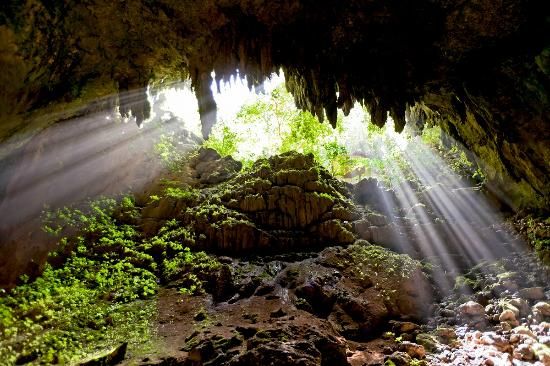
 It is believed that it was in this place that Christopher Columbus first landed on the island.
It is believed that it was in this place that Christopher Columbus first landed on the island.
